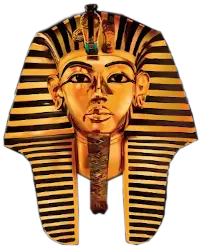
the Dead depicts the allegory of the charioteer and winged steeds, credit for its authorship cannot be given to Plato, but to the Egyptians.
(Sandford: Mediterranean World, c. 12, p. 197; 202; 203; 205; c. 13, p. 220-221).
(Genesis, c. 45, 27; c. 47, 17; Deut. c. 17, 16).
(I Kings, c. 10, 28).
(Homer II. i, 381; Diodorus; Roger's Hist. of Phil., p. 8384).
(John Kendrick: Ancient Egypt, Vol. I, p. 166).
(The Egyptian Book of the Dead).
3. Aristotle: (i) (a) Early Life and Training and (b) His Own List of Books (c) Other Lists of Books (ii) Doctrines (iii) Summary of Conclusions: A. His Doctrines B. (i) The Library of Alexandria B. (ii) True Source of his Unusual Number of Books C. The Discrepancies and Doubts in His Life.
(i) (a) Birth and early life and training.
According to the textbooks on the history of Greek philosophy, Aristotle was born in 384 B.C. at Stagira, a town in Thrace. His father, Neomachus is said to have been a physician to Amyntas, King of Macedonia. Nothing is mentioned in books about his early education, only that he became an orphan and at the age of 19 he went to Athens, where he spent twenty years as a pupil of Plato.
We are also informed that after the death of Plato, his nephew, became the master of his school, and that Aristotle left immediately for Mysia, where he met and married the niece of Hermeias.
Likewise, that after the death of Amyntas of Macedon, his son Phillip having become king, appointed Aristotle as Tutor of his son Alexander a boy of 13 years (later to be called the Great in consequence of his conquest of Egypt).
After Phillip's assassination in 336 B.C. Alexander became
Topics
Greek Philospohy is Stolen Egyptian Philosophy
The Memphite Theology is the Basis of all Important Doctrines of Greek Philosophy
Greek Philosophy was Alien to the Greeks
Greek Philosophy was the offspring of the Egyptian Mystery System
The Egyptians Educated the Greeks
The Curriculum of the Egyptian Mystery System
The Pre-Socratic Philosophers and the teaching Ascribed to them
The Athenian Philosophers
1. Socrates
2. Plato
3. Aristotle